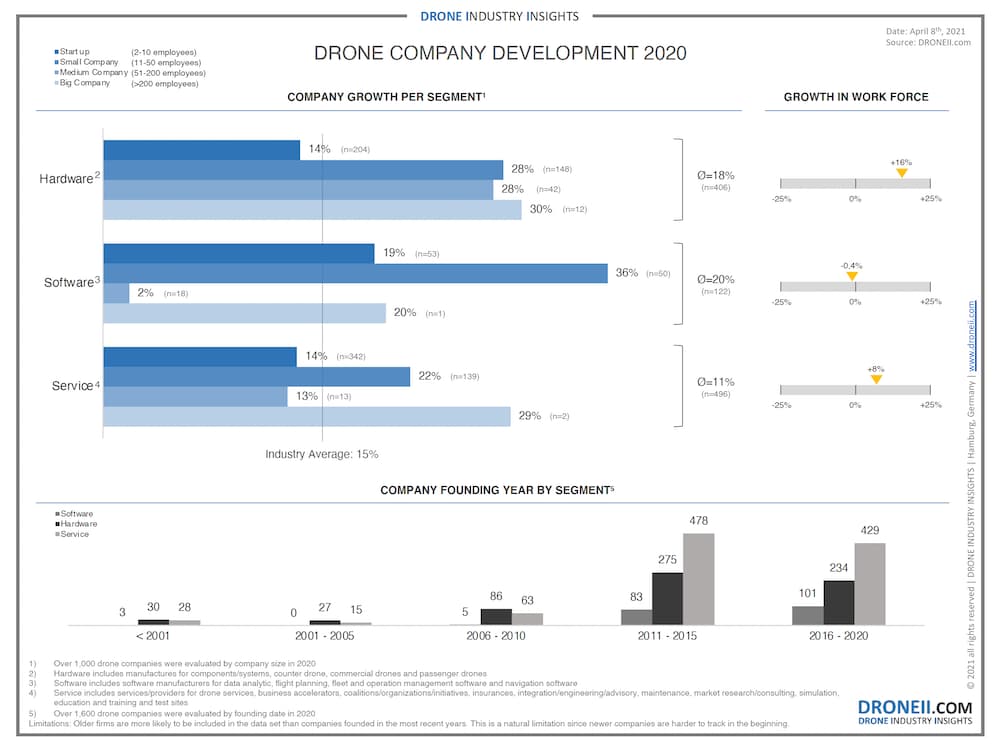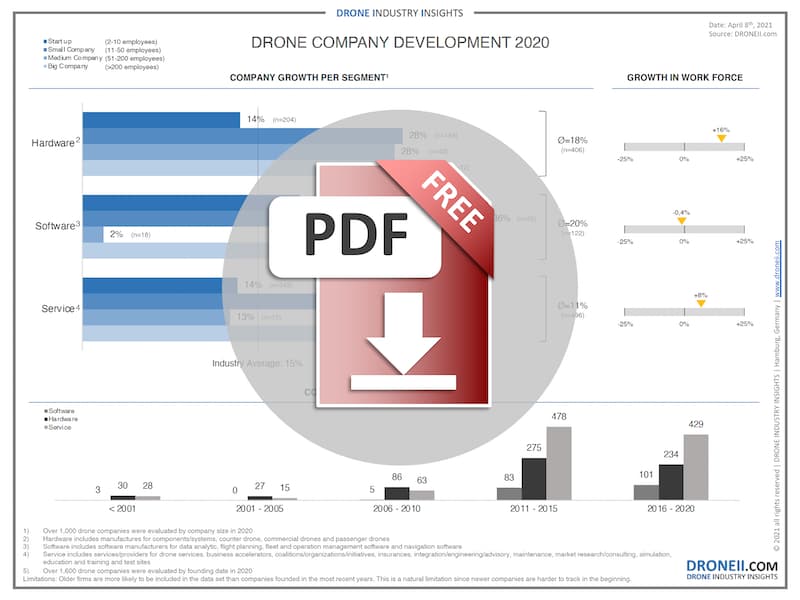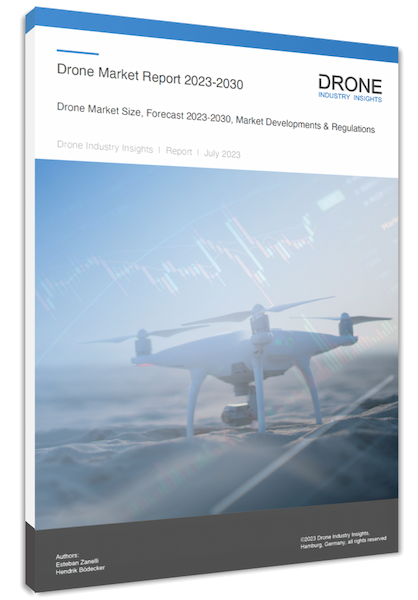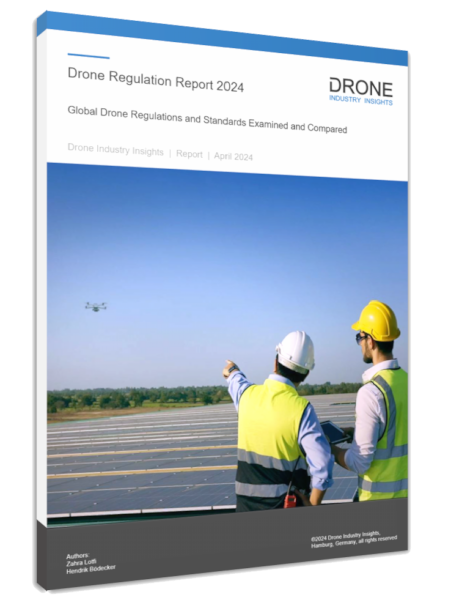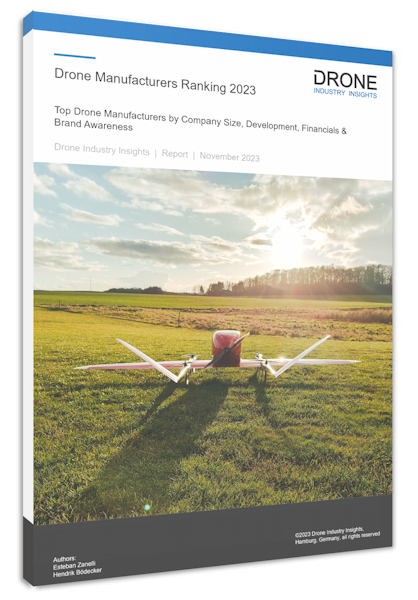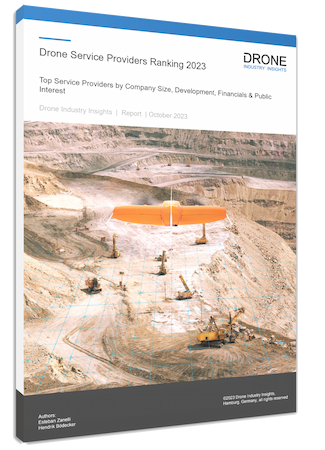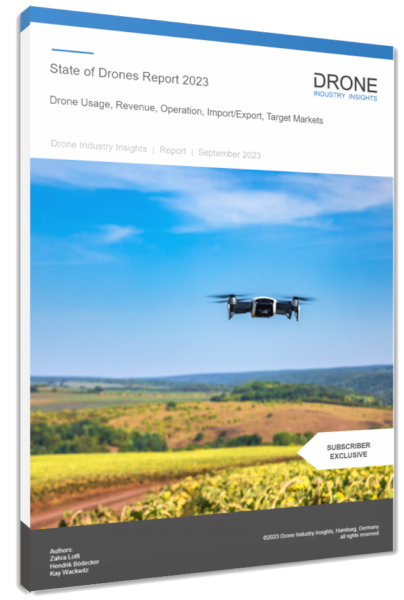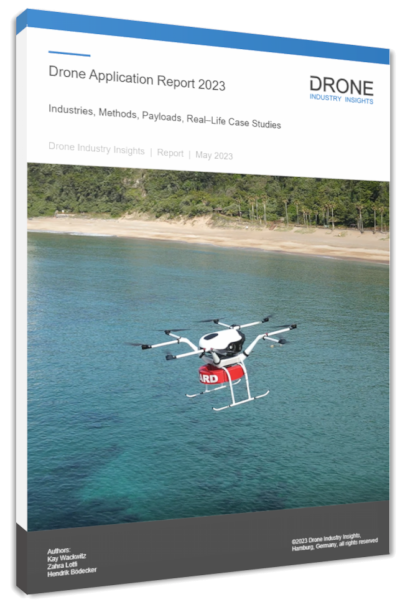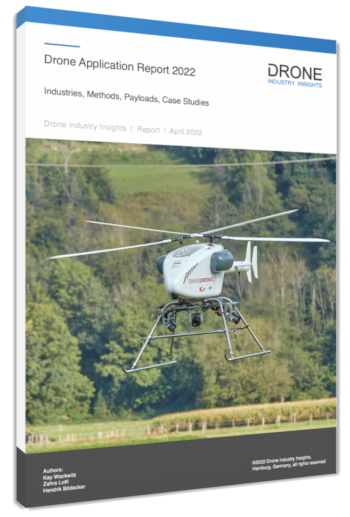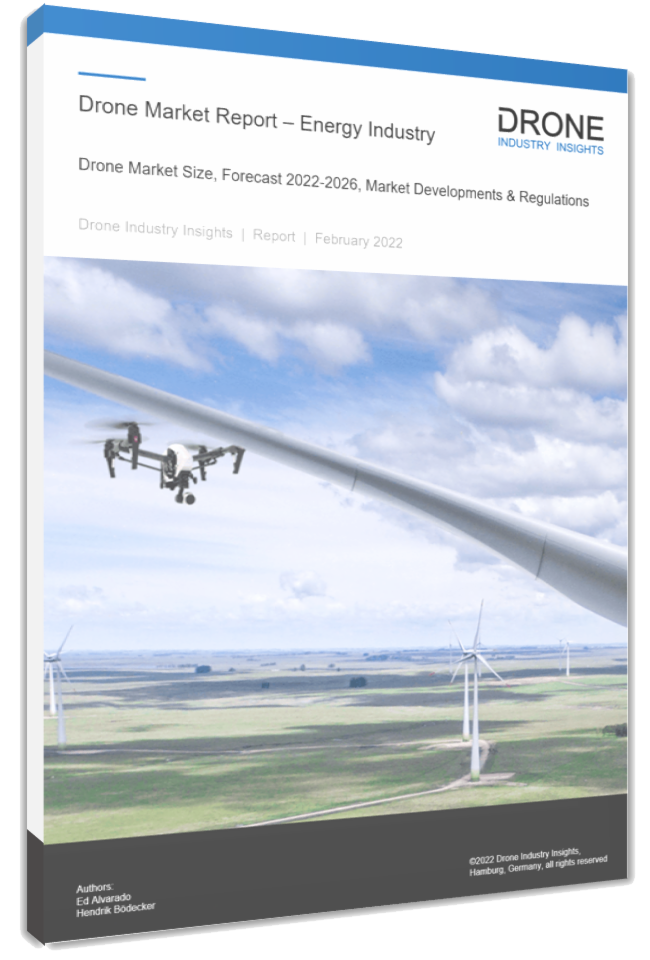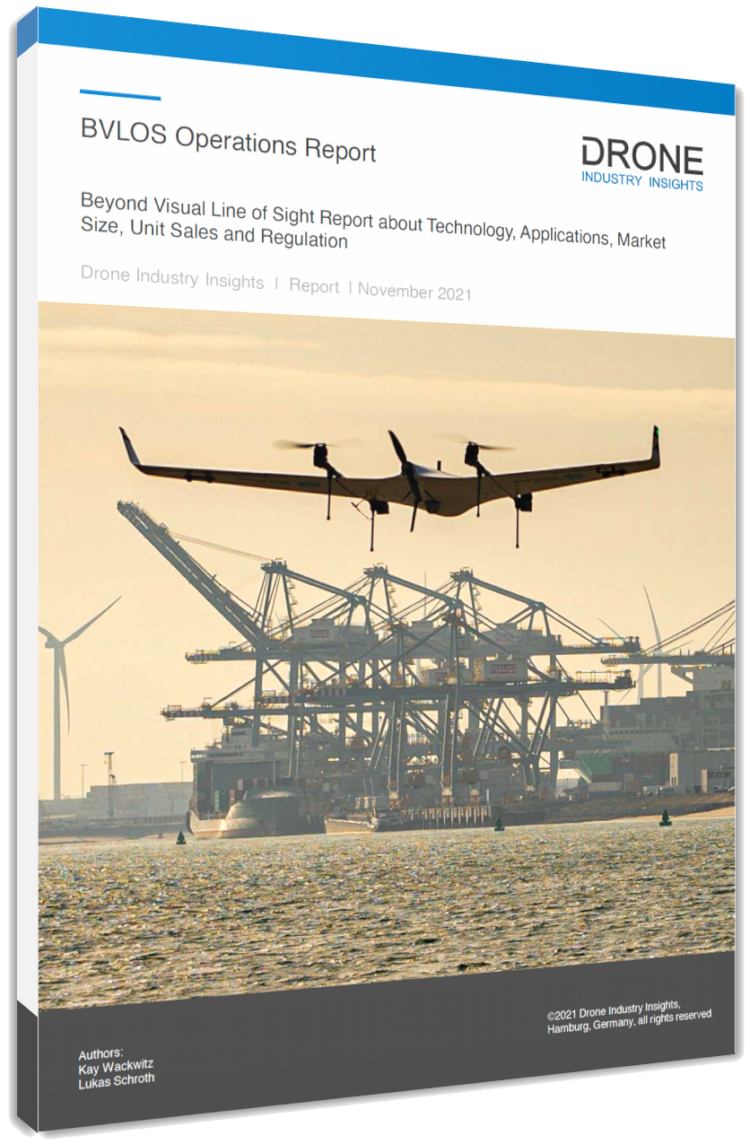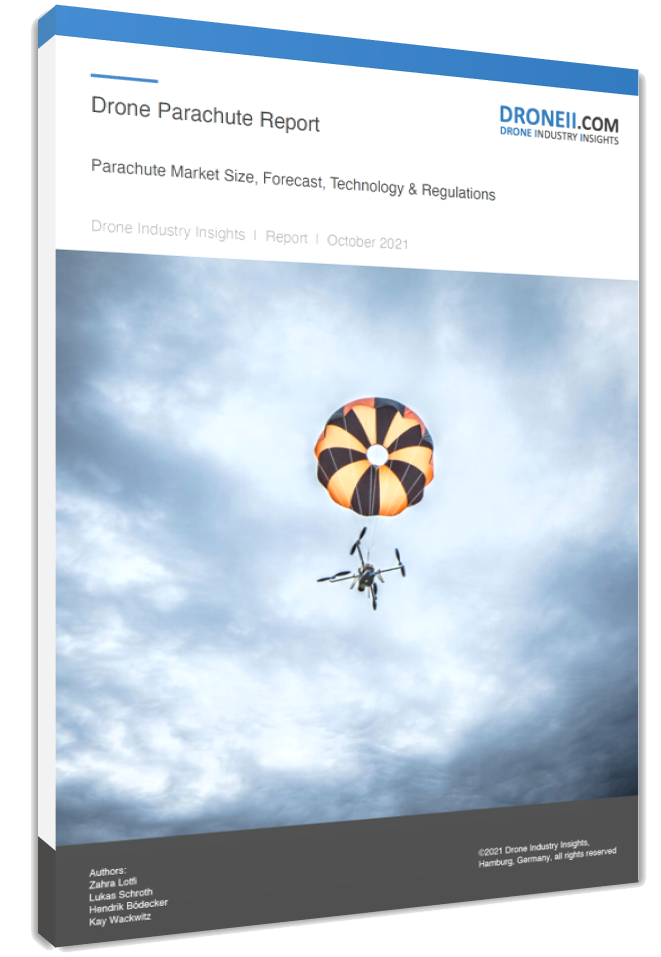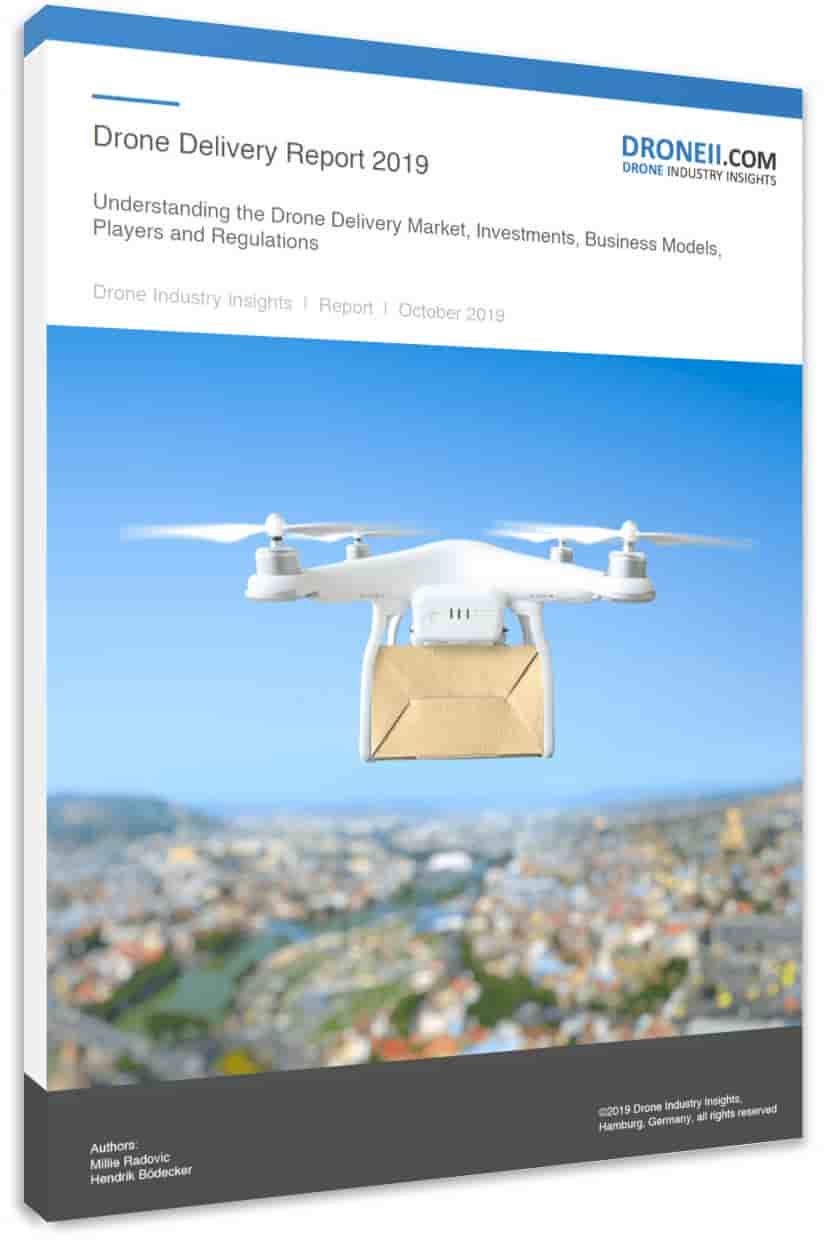Drone Companies and the Pandemic
How did drone companies develop in the pandemic year 2020?
The drone market has grown steadily and continuously over the past several years. The technology is here to stay and is becoming more prevalent across numerous industries. 2020 was a unique year due to Covid-19; we saw and still see many companies around the world from a wide variety of industries struggling. In mid-2020, we surveyed the impact of the pandemic on companies in the drone industry in our Drone Industry Barometer. It showed that the impact did not stop at the drone industry and some drone companies faced problems such as a decrease in demand and layoffs.
On the other hand, some companies indicated an increase in demand and other positive effects on their business. Overall, respondents even felt that the changes in business models triggered by the lockdowns would actually have a positive impact on the drone industry in the long run. Now that 2020 ended, we tracked the founding date and company size development of more than 1,000 companies whose core is the drone business across a wide range of industry sectors. Additionally, the drone companies were classified into start-ups, small companies, medium companies, and large companies to show how businesses of different sizes were affected.
Drone companies increased 15% in size in 2020
On average, the companies grew by 15% in personnel, which corresponds to an increase of 11% of the total drone industry workforce.
In the field of software, the average increase of drone companies was the highest, namely by 20%. At the same time, this segment was the only one which saw a decrease by -0.4% in total workforce. Within the software segment, companies in the fields of flight planning, fleet and operation management and developers of UTM systems grew more strongly than those involved in data analysis. In the latter, only a total increase of 2% was recorded, where the gap between growing and downsizing drone companies was particularly large.
The software sector is followed by hardware companies, which recorded an average increase of 18%. This was primarily brought by larger drone companies. As a result, the total number of new employees was also significantly higher at 16%. Within the hardware segment, passenger drone manufacturers grew particularly strongly. These saw large investments in the last two years, which allowed them to grow rapidly. Commercial drone manufacturers grew at about the industry average at 14%.
Companies from the service sector were only able to grow by an average of 11%, which corresponded to an increase of 8% in the total number of employees in this sector. Here, it was the larger drone companies that tended to show stronger growth. There was also a lot of volatility in the service sector. While some companies in areas such as consulting and advisory or marketplaces for drone footage grew much below average, other areas such as news, blogs and magazines performed significantly better. The largest sub-segment by far, the Drone Service Providers (DSPs), grew more or less in line with the market. Here, it was primarily the larger DSPs that grew more strongly.
More and more companies are entering the drone market
In addition to the development of company size, the year in which drone companies were founded was also analyzed. Here, there has been a significant increase in new companies founded over the last few years. While only about 257 companies (14%) were founded in 2010 or earlier, there were 836 (44%) from 2011 to 2015 alone. From 2016 to 2020, 790 companies (42%) of the dataset were established with a focus on drones. At this point, it should be noted that older firms are more likely to be included in the data set than companies founded in the recent years. This is a natural limitation since newer companies are harder to find soon after they are established.
The software sector in particular is characterized by a large start-up culture. 53% of drone companies were founded after 2015, compared to 42% in the service sector and only 36% in the hardware sector. In the software sector, a predominantly large number of drone companies from the UTM developer (57%) and Flight Planning, Fleet and Operation Management (54%) sub-segments were founded after 2015.
In the hardware segment, the establishment of new companies producing commercial drones actually declined in the period from 2016 to 2020 (234 companies) compared with the period from 2011 to 2015 (275 companies). Only passenger drone manufacturers show a higher distribution of companies (62%) being founded after 2015.
In the service sector, a continuous development similar to the overall market was generally seen. 43% of the service companies were founded after 2015 while 33% were founded in the period from 2011 to 2015. Most DSPs were established between 2011 to 2015 (54%), while about one-third (34%) were started between 2016 – 2020.
Larger drone companies were able to grow more strongly than small companies
It is noticeable that there is a correlation between time on the market, company size and company development. While drone companies from the hardware segment were founded on average as early as 2012, it was primarily the already-larger companies that developed positively last year. In the software segment, a large number of smaller companies grew more than average, with their average year of foundation being 2015. Here again, the “maturity” of the different segments becomes clear. While drone hardware is already quite mature, the limiting factors for adapting drones today are often legislation and software. In the software area, it is particularly important to develop industry-specific solutions to make the data recorded by the drone usable. There are many (smaller) software companies that have taken on this challenge, whereby success and failure are often close together. This may lead to rapid growth on the one side, but also to downsizing of the company on the other. The service sector, dominated by DSPs, moves between the two segments hardware and software.
“Remotization” of work increased during the pandemic and drones are part of that
In general, it can be said that drone companies in 2020 have developed positively despite the pandemic. Whether the year would have been even better without Covid-19 and the average growth of the companies would have been higher than 15% cannot be fully judged. But there were also other positive effects for the drone industry: First, there was an increased focus on certain drone applications, which created pressure to adapt them more quickly, and second, new applications, within the realms of “Remotization” were created. We discussed both cases last year in June in the article Drones and the Coronavirus: Form Crisis to Opportunity.
Download our FREE Infographic: Drone Companies Development in 2020
This infographic “Drone Companies’ Development in 2020” company growth per segment in 2020 as well as the years when companies were founded up to 2020.

Lukas holds a degree in Aerospace Engineering as well as a Masters in International Business Administration and Engineering. During his education he was involved several consulting and process optimization projects at MTU Aero Engines AG. At DRONEII he’s the go to voice on drones and AI.

Lukas holds a degree in Aerospace Engineering as well as a Masters in International Business Administration and Engineering. During his education he was involved several consulting and process optimization projects at MTU Aero Engines AG. At DRONEII he’s the go to voice on drones and AI.
